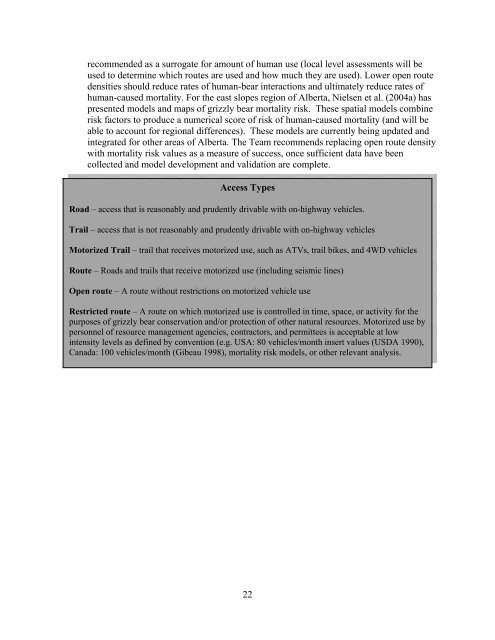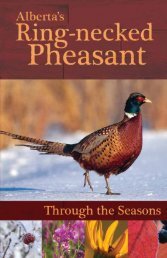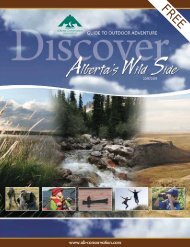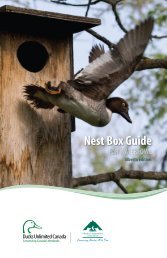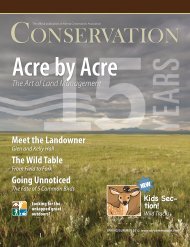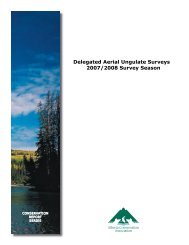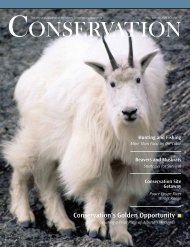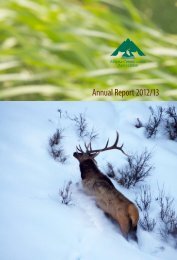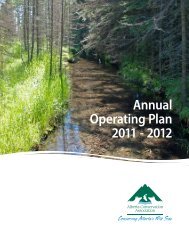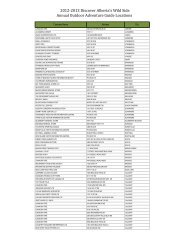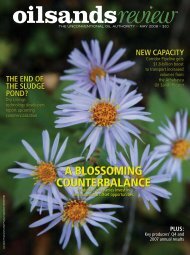Alberta Grizzly Bear Recovery Plan 2008-2013 - Alberta Sustainable ...
Alberta Grizzly Bear Recovery Plan 2008-2013 - Alberta Sustainable ...
Alberta Grizzly Bear Recovery Plan 2008-2013 - Alberta Sustainable ...
You also want an ePaper? Increase the reach of your titles
YUMPU automatically turns print PDFs into web optimized ePapers that Google loves.
ecommended as a surrogate for amount of human use (local level assessments will be<br />
used to determine which routes are used and how much they are used). Lower open route<br />
densities should reduce rates of human-bear interactions and ultimately reduce rates of<br />
human-caused mortality. For the east slopes region of <strong>Alberta</strong>, Nielsen et al. (2004a) has<br />
presented models and maps of grizzly bear mortality risk. These spatial models combine<br />
risk factors to produce a numerical score of risk of human-caused mortality (and will be<br />
able to account for regional differences). These models are currently being updated and<br />
integrated for other areas of <strong>Alberta</strong>. The Team recommends replacing open route density<br />
with mortality risk values as a measure of success, once sufficient data have been<br />
collected and model development and validation are complete.<br />
Access Types<br />
Road – access that is reasonably and prudently drivable with on-highway vehicles.<br />
Trail – access that is not reasonably and prudently drivable with on-highway vehicles<br />
Motorized Trail – trail that receives motorized use, such as ATVs, trail bikes, and 4WD vehicles<br />
Route – Roads and trails that receive motorized use (including seismic lines)<br />
Open route – A route without restrictions on motorized vehicle use<br />
Restricted route – A route on which motorized use is controlled in time, space, or activity for the<br />
purposes of grizzly bear conservation and/or protection of other natural resources. Motorized use by<br />
personnel of resource management agencies, contractors, and permittees is acceptable at low<br />
intensity levels as defined by convention (e.g. USA: 80 vehicles/month insert values (USDA 1990),<br />
Canada: 100 vehicles/month (Gibeau 1998), mortality risk models, or other relevant analysis.<br />
22


